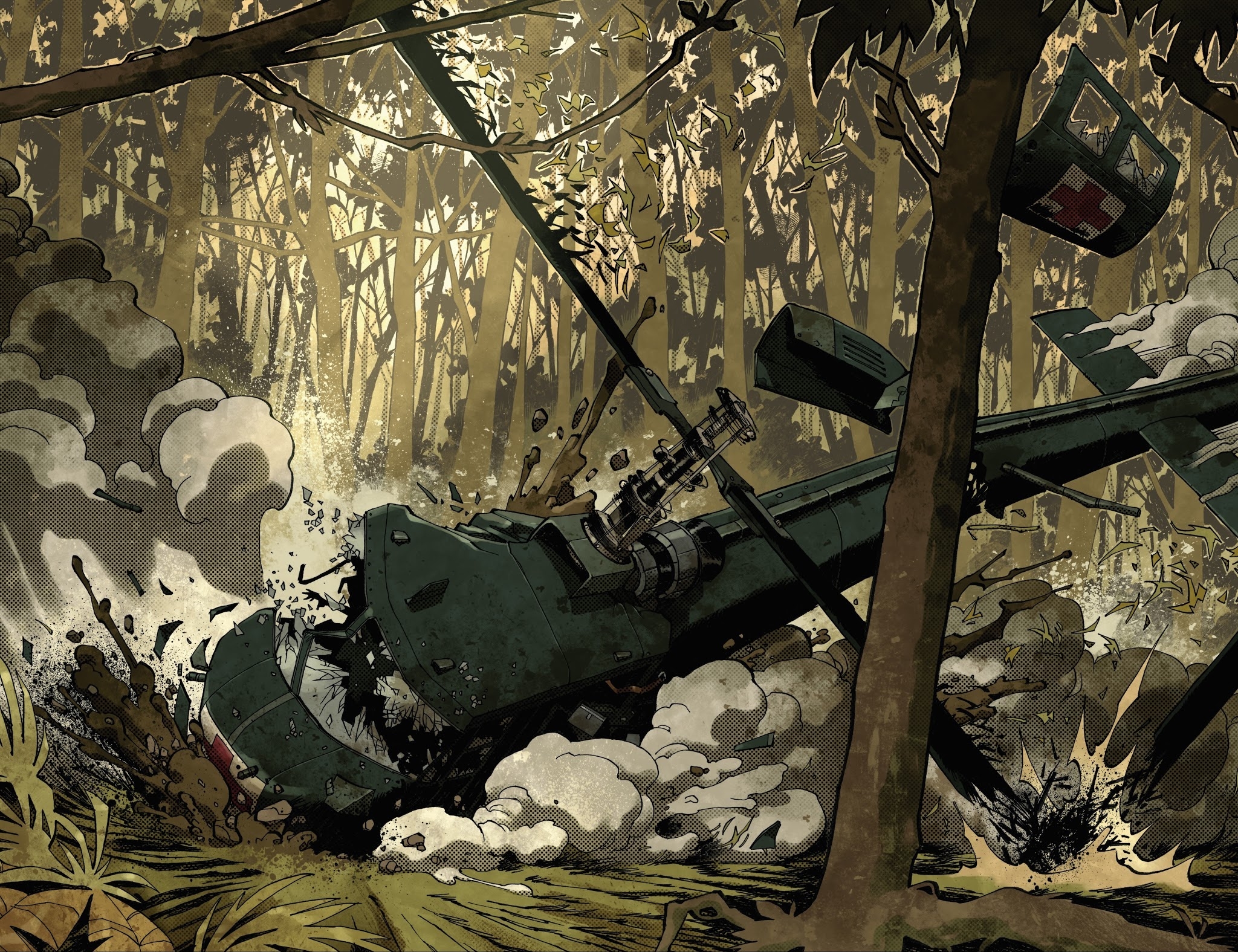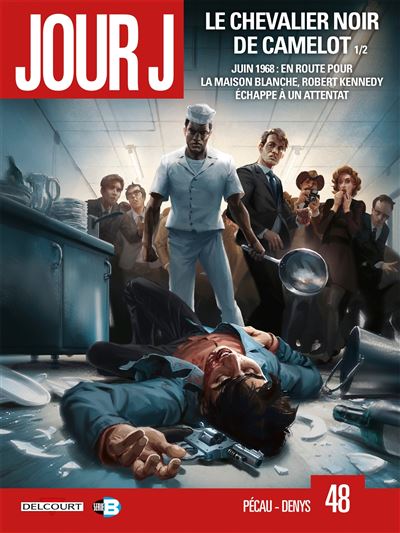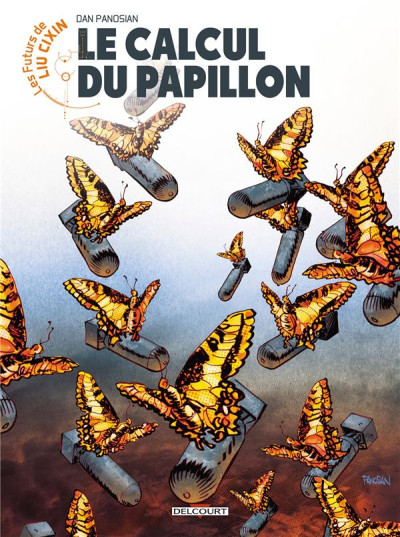The Cape 1969 returns in one volume to the sources of a story by Joe Hill (Locke & Key) but leaving the news to describe the Vietnam War. Is getting a superpower enough to become a good man?
At the origin of the cape
The Cape 1969 is a complete one-volume story written by Zach Howard. However, this is a prequel to The Cape. Indeed, the book tells the agonizing fate of the father of the children of this first series. This link between the two stories is shown at the beginning of each chapter because the mother reads to these two children a letter from their father and then official letters from the US army. Several images from the first series The Cape are inserted in 1969. The artist of the first series, Zach Howard makes a box and the covers of four chapters that can be seen between each chapter and the alternative covers as bonus at the end of the volume. The theme is adapted from a short story by Joe Hill who ensures respect for his universe by being responsible for the collection. We find the common desire to destroy the myth of the hero but in a different context.
The Cape 1969 is indeed a war story set in Vietnam. A soldier's wife reads the false letter from her husband who had gone on a mission to Southeast Asia. Then you find out the truth. This murderous war scratches American power: an African-American has his skull pierced by a bullet when he was soon to finish his mission. Chase is a helicopter pilot but following an attack a large part of the crew is decimated and his Huey crashes in the middle of the enemy zone in the jungle. The reader finds the classic passages of the stories in Vietnam. Guerrilla warfare in the jungle is oppressive because, with the density of vegetation, you can never know where the attack will come from. As often for this place of combat, the good disappears in the rice fields and the vision of humanity is very dark. The Viet Cong tortured prisoners.
The screenwriter wants to get out of stereotypes about Vietnam. Vietnamese who had lived in the United States chose to return and support the Viet Cong out of nationalism. Chase does not kill but repatriates the wounded. The last part transforms the external conflict into a fight against discrimination. Alas, these ideas tend to make Americans look good (who only react) and Viet Cong as savages willing to kill their own fellow citizens because of their difference.
Superheroes in the jungle
The very realistic genre of war stories is shaken up by a superhero narrative. Indeed, if the first episode shows a banal dialogue between marines, The Cape 1969 ends with a dogfight worthy of Superman. Chase receives a unique gift but he is already a hero who feels neither fear nor fatigue. He is a leader who knows survival techniques. The American soldiers are observed by a levitating Asian with a fully tattooed body. He is as powerful as he is benêt because he never stops smiling even in the worst situations. However, the gender is also perverted. Chase does not act for the good but to survive. He is racist and abuses his power out of revenge.
In The Cape 1969, cartoonist and colorist Jason Ciaramella has a style reminiscent of tags by square shapes and thick inking. We also find the urgency of the drawing forbidden by colorization using large brushstrokes. It has a very effective style that makes reading military episodes breathless. The fall of the helicopter is very effective and it does not hide the violence of the fighting. The color is very successful. There is a strong presence of colors related to the earth and black is made by small dots as in the old comics.
Published by HiComics, The Cape 1969 extends the initial narrative. The fan finds characters and the darkness of the main story. But the setting is different: the story of denunciation of the myth of the superhero is shaken up by a war adventure in the Vietnamese jungle.
Find on our website other HiComics releases with Locke & Key the Golden Age and The Witcher.















![[Live Report] Rock En Seine 2024 : 20 ans et toujours aussi passionnés !](https://www.justfocus.fr/wp-content/uploads/2024/11/RES24_JOUR01_LANA-DEL-REY_LOUIS-COMAR-12.jpg)























